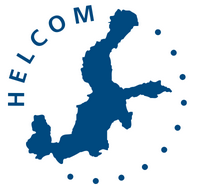The comprehensive HELCOM overview of the state of the Baltic Sea follows up on the status of the Baltic Sea environment, saying that management is improving but that the environmental objectives of the Baltic Sea Action Plan will not be reached in time.The ‘State of the Baltic Sea’ assessment, now made available as a first version for consideration, is an outcome of a large scale collaboration among Baltic Sea countries. It provides a scientific evaluation of the environmental status of the Baltic Sea during 2011-2015, and assesses pressures and impacts from human activities, as well as social and economic dimensions, in the entire Baltic Sea.The summary report, and its underlying material, can be accessed via its . The next step will be to subject it to a regional consultation carried out by HELCOM. The final report will be published by June 2018, and will include one additional year of monitoring data.The assessment is based on an extensive set of materials, including the HELCOM core indicators and Baltic-wide maps, covering aspects such as eutrophication, contamination, marine litter, underwater noise, fishing, hunting, and effects of habitat loss. The assessment of benthic and pelagic habitats, fish, marine mammals, and birds indicate that biodiversity status is inadequate for most assessed species, and that continued efforts to support biodiversity are of key importance.The results are made available for use in analysing progress in relation to the goals of the HELCOM Baltic Sea Action Plan, namely: to achieve a good environmental status in the Baltic Sea. They will also provide background for negotiations in the next HELCOM Ministerial Meeting to take place on 6 March 2018 in Brussels under the European Union chairmanship of HELCOM.Additionally, the assessment results are available for national consultation in EU Member states, forming a regional umbrella report for reporting under the EU Marine Strategy Framework directive. The assessment can also provide a baseline for future work to reach UN Sustainable Development Goals.The ‘State of the Baltic Sea’ is a regionally coordinated assessment and a major undertaking of all Baltic Sea countries as well as the European Union. The results are the outcome of the committed work of HELCOM experts and national representatives, whom have developed and worked to improve a regionally agreed on monitoring and assessment system, used as a shared knowledge base for developing Baltic Sea environmental management.The results and materials underlying the assessment can be accessed at .* * *Note for editors:The State of the Baltic Sea assessment is carried out by the (2014–18). The project develops common concepts and methods for the status assessment based on core indicators, creates and tests the tools for aggregated results, and performs assessments at a regional scale. The development of the assessment methods is supported by other projects, including a number of EU-co-financed projects.HELCOM is an intergovernmental organization made up of the nine Baltic Sea coastal countries and the European Union. Founded in 1974, its primary aims as a governing body are to protect the marine environment of the Baltic Sea from all sources of pollution, as well as to ensure safe maritime navigation. The official name of HELCOM is the Baltic Marine Environment Protection Commission; it is the governing body of the .HELCOM Heads of Delegation, nominated by the Contracting Parties to the Helsinki Convention, which are the nine Baltic coastal states as well as the EU, usually meet twice a year. The highest decision-making body of HELCOM, the Annual Meeting, convenes usually in March. Approximately every three years the Commission meets at .* * *For more information, please contact:Lena BergströmHOLAS II Project CoordinatorHELCOME-mail: lena.bergstrom(at)helcom.fiTel: +358 40 080 3428Jannica HaldinProfessional Secretary for Gear and State and Conservation groupsHELCOME-mail: jannica.haldin(at)helcom.fiTel: +358 40 485 5905
The comprehensive HELCOM overview of the state of the Baltic Sea follows up on the status of the Baltic Sea environment, saying that management is improving but that the environmental objectives of the Baltic Sea Action Plan will not be reached in time.
